“The penalty of realism is that it is about reality and has to bother for ever not about being ‘beautiful’ but about being right.” –John Grierson
I write this having recently opened an exhibition entitled On Documentary Abstraction. 1
- On Documentary Abstraction is on view at Art Center/South Florida through December 17, 2017. The show features work by Torkwase Dyson, Eugenio Espinoza, Tomashi Jackson, Richard Ibghy and Marilou Lemmens, and is accompanied by two film screening programs with a variety of artists.
- “Documentary research” is indicated here to mean both the research into documents, or to the historical record, and the past, as well a visual journalistic inquiry into, or the examination of the real.
- This is absolutely a battle that has been waged in pockets of contemporary art history and criticism, from post-modernism on, yet still reveals itself in criticism, press releases, universities, and gallery didactics.

This research splits into a few historical points regarding abstraction. The first is that the Modern art historical construction of abstraction (via Clement Greenberg et al) ignored a centuries-long history of abstract and formalist practices from around the world. It also disregarded Modern abstract artists’ own acknowledgement of visual and contextual references outside of their field. And then finally, there has been an ongoing tradition of Modern and contemporary abstraction from around the world that operates upon or engages with coextensive lived existence. To illustrate this last point, a line can be drawn through examples from early Modern art to the present. Malevich’s obstructionist abstractions heralded the post-revolutionary Bolshevik government through avant-garde tactics. 4
- Boris Groys called the Black Square “an open window through which the revolutionary spirits of radical destruction could enter the space of culture and reduce it to ashes.” Groys, Boris. “Becoming Revolutionary: On Kazimir Malevich,” E-flux, Journal #47, September 2013
- Pérez-Barreiro, Gabriel. Radical Geometry: Modern Art of South America from the Patricia Phelps De Cisneros Collection.
- A thoughtful survey piece among a recent constellation on the subject is Chloe Bass’s “Can Abstraction Help us Understand the Value of Black Lives?” published in Hyperallergic
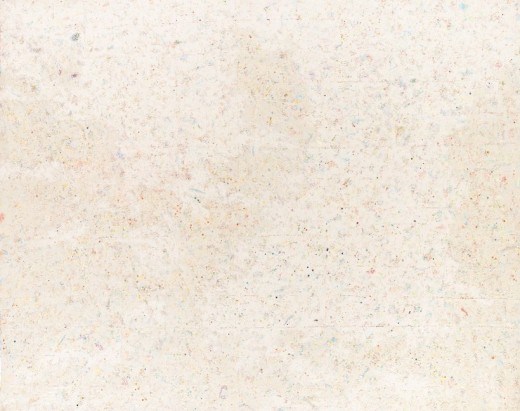
Finally, in this exhibition and surrounding research, I want to suggest a small way to recuperate documentary. After many years of programming and writing about moving image art, especially in the experimental documentary realm, I have been thinking about how we can make steps towards repairing documentary media’s association with form. It’s important here to remember that documentary was an art form before it became an extension of ethnography, or was later bound up with the goal of creating impact for its subjects and audience. John Grierson, who coined the term documentary in the 1920s, defined it as the “creative treatment of actuality,” that is, a form of art dealing in the real. My research furthermore attempts to think of documentary as a practice in art, separate from documentation; separate from the interpassive, faux democratic terms of popular contemporary nonfiction brought about by the mainstream documentary industry and rise of the “social issue doc.” 7
- I’m referring here to a whole industry with a range of perspectives, styles, and budgets, but to give some larger examples, directors like Alex Gibney, Michael Moore, or even Adam Curtis, whose work aims to create social change through expose, antagonism, and typical filmic narrative devices.
- At the same time, placing documentary practices into the contemporary art field has introduced a whole new set of problems or avenues of critique for the mode, as attends any socially-engaged art in the contemporary art sphere.
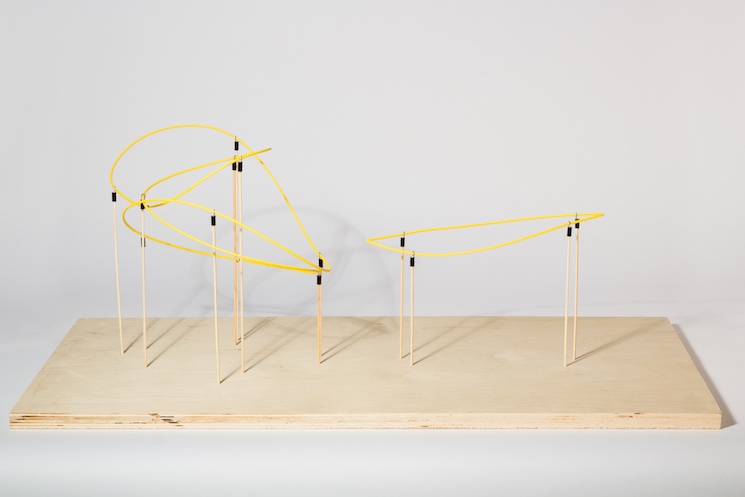
Each of the artists in this exhibition studies complex current and historical phenomena and materializes it into aesthetic objects, embedding their research into abstract forms. Richard Ibghy and Marilou Lemmens’ works transform graphic representations about mass production, human labor and economic thought into simple forms that resemble shapes and line formations found in Modern Abstract art. Ibghy & Lemmens’ recent series Each Number Equals One Inhalation and One Exhalation comprises numerous small sculptures that are based on graphs and diagrams portraying and analyzing human productivity from the mid-nineteenth century to the present, showing in spatial form early Taylorist and Fordist analyses. Drawn from a wide range of disciplines, including work science, scientific management, economics, and psychology, the forms illustrate various efforts to increase efficiency through understanding the pressures on and movements of the body. The sculptures subvert the authoritative nature of the originals by representing them as abstract objects and at the same time suggest how the aesthetics of data visualization structures perception and buttresses capitalist ideologies. Ibghy and Lemmens’ re-visualization is then not only about communicating history; it also performs historiography on the visuals that have helped to shape it.
Torkwase Dyson’s black and white acrylic on board paintings reference the history of violence against Black Americans in the U.S. 9
- From a report conducted by the Equal Justice Initiative, 2015
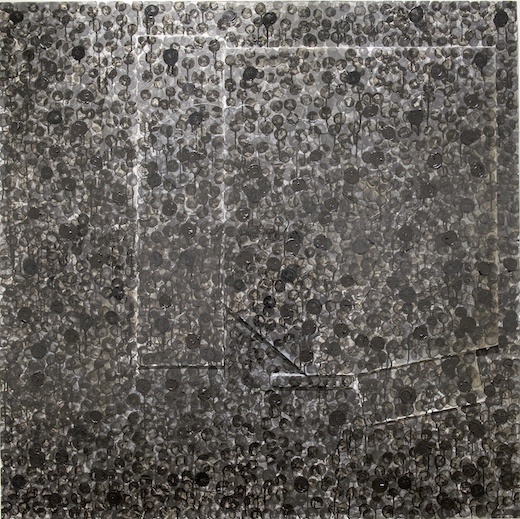
Contending with another facet of Black history in the US, and employing an entirely different conceptual frame, Tomashi Jackson’s recent works simultaneously reference the history of segregation in the US and the theoretical legacy of American abstraction. Jackson’s process for these works originated in the study of transcripts from historic American Civil Rights court cases, such as Brown vs. the Board of Education, alongside works and writing by mid-century abstractionists such as Josef Albers and Barnett Newman. The comparison suggested similarities in the language used to describe artistic and societal rules about color interaction, each with their own distinctions and terminologies, for example legal discussions about integration resembling ideas in Albers’ Interaction of Color regarding “purity” and “mixing.” The resulting pieces combine painting, sculpture, textiles, embroidery, and printmaking into sculptures that are both structured and emotive. Jackson’s Grape Drink Box (Anacostia Los Angeles Topeka McKinney) is a materially complex work that uses vernacular and technical materials to show the permeation of color and form into social life, and includes elements of photography that are embedded to look like afterimages. Its multi-referent title provides a key to the many past and recent situations of violence and discrimination layered within this body of work, and an ongoing visual scholarship that views racism through the language of color theory and abstract aesthetics.
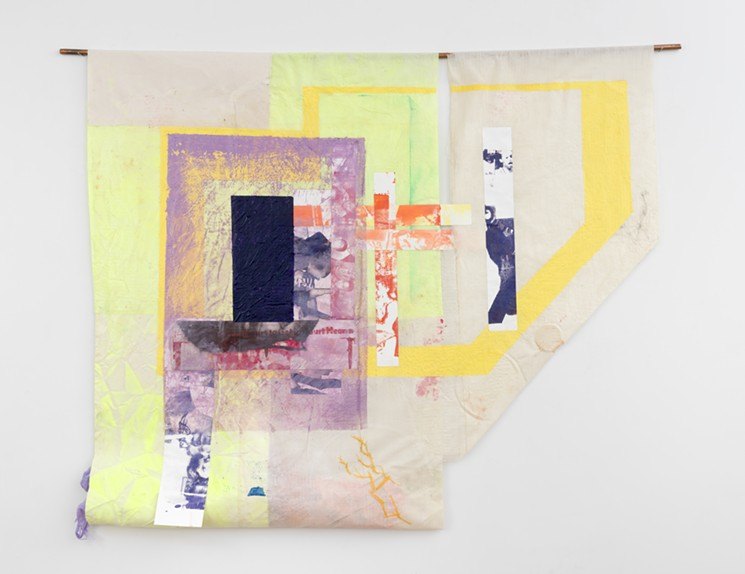
This text, and the exhibition, are each introduced with a series of prints taken by Eugenio Espinoza, a key figure of the 1960s and 1970s Latin American Avant-Garde. These photographs document his grid interventions, in which he placed a large cloth printed with the iconic Modernist design into real life scenarios and encouraged visitors to his exhibitions to interact with it—literally placing abstract aesthetics into lived existence. The gesture was meant to undermine Geometric abstraction’s obsession with the grid, but also serves as a playful reminder of the evidentiary potential of lines and forms. The contemporary works in this show— merely a few among many current practices— echo that gesture by demonstrating the artistic and communicative potential for deploying documentary through formalism, and proposing what a post-figurative documentary practice might look like.
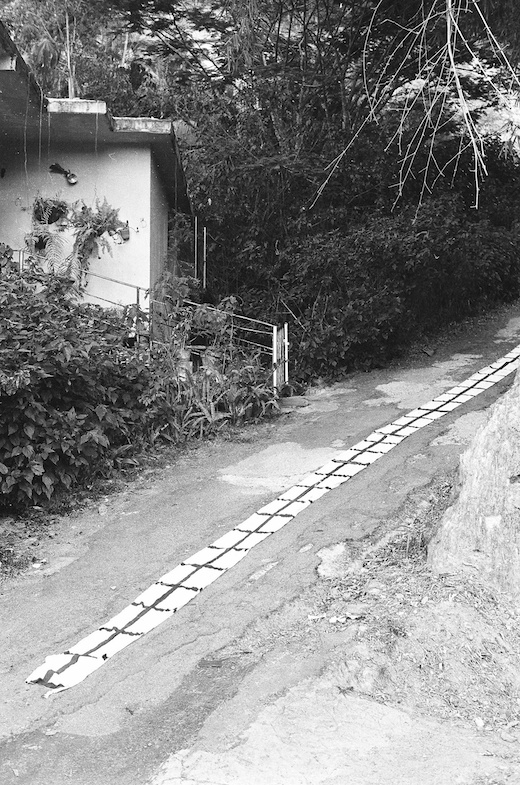
Note: Elements of this text were presented by the author at a talk held at Prosjektrom Normanns, Stavanger, as a part of the CAS Residency in Art Writing in June 2017.
Rachael Rakes is a curator, critic, and teacher from New York, currently working as an editor for the Brooklyn Rail, programmer at large for Film Society of Lincoln Center, and an editor at large for Verso Books. Rakes has recently contributed criticism to Art-Agenda, Artforum, and Ocula, and organized exhibitions for Art Center/South Florida, A.I.R. Gallery, The Knockdown Center, ISCP, Malmö Konsthall, and the Hessel Museum of Art. From 2010-2013, Rakes was Assistant Curator at the Museum of the Moving Image. With Leo Goldsmith, she is at work on a book on radical filmmaker Peter Watkins, which received a 2014 Creative Capital/Warhol Foundation Arts Writers Grant. Rakes is a graduate of the Center for Curatorial Studies, Bard College, and currently teaches a critical history of socially-engaged art at The New School. She has recently been a Curator in Residence for the CPR: Mexico program, an Arts Writer in Residence for Contemporary Art Stavanger, and an MFU fellow with BHQFU and ArtCenter/South Florida.


